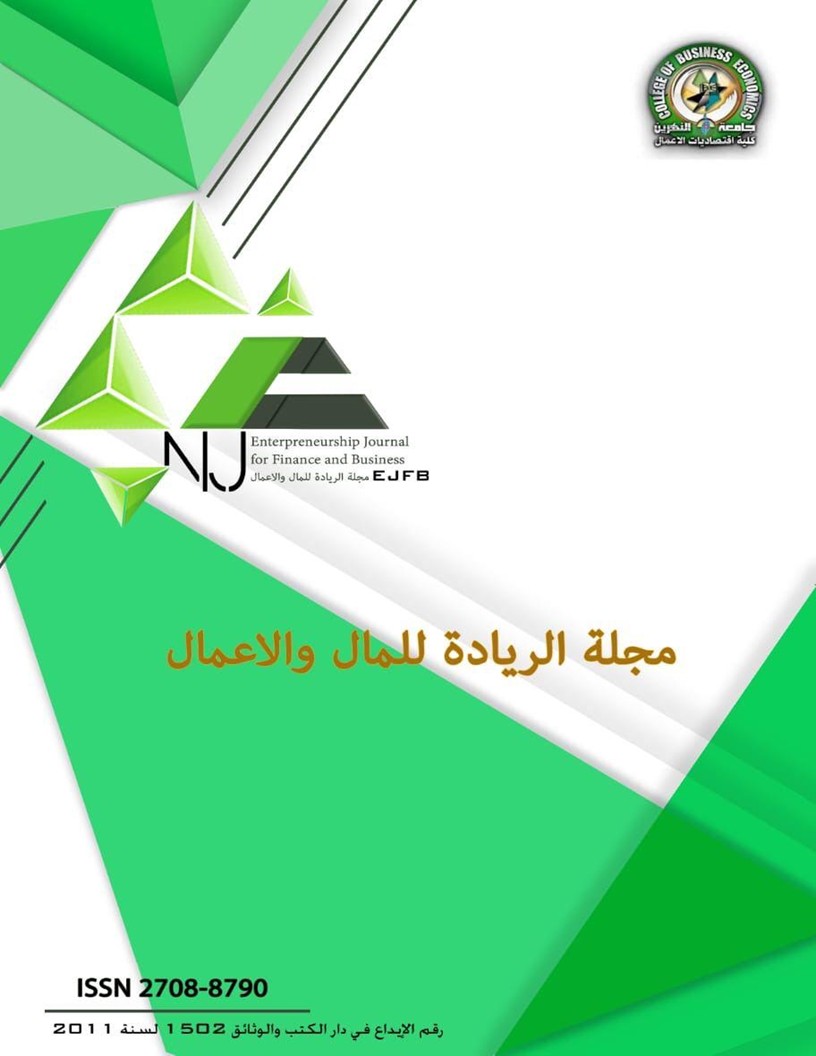Abstract
This research aims to identify the contribution made by competition in helping young people implement their medium, small and micro projects, in order to ensure their success and achieve the desired goals, specifically in the early stages of establishing these projects. The research problem confirmed that many young people rely on the main pillars of competition (cost, quality, creativity, flexibility) in implementing their projects, but they do not have sufficient knowledge about their most important cognitive contents and how to invest them in competition with others. Accordingly, there is a cognitive deficiency more than a field deficiency in this field. As for the importance of the research, it was represented in presenting a set of proposals that contribute to enhancing the ability of the researched sample and society to invest in the relationship between competition and the success of youth projects (medium, small, and micro). Accordingly, this research aims to diagnose the reality of these two variables and discover the relationships of association and influence between them. To complete the research in its theoretical and field areas, the descriptive approach was adopted. The researchers also relied on a set of previous ideas in designing the questionnaire that was used in collecting data, after testing and adapting it to suit the Iraqi environment, which was distributed to a sample of young people with projects (medium, small, and micro) in the Shorjah area and the Arab market in Baghdad, numbering (376) individuals. The researchers also used measures of central tendency in processing the data from a statistical perspective using a set of tools available in the statistical program (SPSS.v23). These statistical tools provided researchers with a set of results that confirmed the application of the foundations of competition (cost, quality, creativity, flexibility), and youth projects (medium, small, and micro) to a high degree from a statistical point of view. Moreover, the foundations of competition contribute to a moral and statistical degree in enhancing the ability of youth to implement their projects and their success. Accordingly, the researchers recommended reviewing the world\'s experiences and the mechanisms that were adopted to encourage competition among youth, in addition to the support that was provided to them, whether materially or morally, and helping them build their various projects, and trying to transfer them to the Iraqi environment to invest their results and employ them in innovating various projects, whether (medium, small, and micro).
Keywords
Competition
environment
medium and micro
projects
small
youth
Abstract
يهدف هذا البحث الى التعرف على الاسهام الذي تمارسه المنافسة في مساعدة الشباب على تنفيذ مشاريعهم المتوسطة والصغيرة والمتناهية الصغر، من اجل ضمان نجاحها وتحقيق الاهداف المرجوة منها وعلى وجه التحديد في المراحل المبكرة لتأسيس هذه المشاريع، اذ اكدت مشكلة البحث بان العديد من الشباب يعتمدون على مرتكزات المنافسة الرئيسة (الكلفة، الجودة، الابداع، المرونة) في تنفيذ مشاريعهم ولكن ليس لديهم معرفة كافية حول اهم مضامينها المعرفية وكيفية استثمارها في المنافسة مع الاخرين، وعليه يوجد قصور معرفي اكثر منه ميداني في هذا المجال، اما اهمية البحث فقد تمثلت بتقديم مجموعة من المقترحات التي تسهم في تعزيز قدرة العينة المبحوثة والمجتمع في استثمار العلاقة بين المنافسة ونجاح مشاريع الشباب (المتوسطة، الصغيرة، والمتناهية الصغر)، وعليه فان هذا البحث يهدف الى تشخيص واقع هذين المتغيرين واكتشاف علاقات الارتباط والتأثير بينها. ولإنجاز البحث بمجالاته النظرية والميدانية اعتمد المنهج الوصفي، كما استند الباحثون على مجموعة من الافكار السابقة في تصميم الاستبانة التي تم استخدامها في جمع البيانات، بعد اختبارها وتكييفها لتلائم البيئة العراقية، والتي تم توزيعها على عينة من الشباب ذوي المشاريع (المتوسطة، الصغيرة، والمتناهية الصغر) في منطقة الشورجة والسوق العربي في بغداد والبالغ عددهم (376) فرداً، كما استعانة الباحثون بمقاييس النزعة المركزية في معالجة البيانات من الناحية الاحصائية باستخدام مجموعة من الادوات المتاحة في البرنامج الاحصائية (SPSS.v23). وقد قدمت هذه الادوات الاحصائية للباحثين مجموعة من النتائج اكدت تطبيق مرتكزات المنافسة (الكلفة، الجودة، الابداع، المرونة)، ومشاريع الشباب (المتوسطة، الصغيرة، والمتناهية الصغر) بدرجة عالية من الناحية الاحصائية، كما ان مرتكزات المنافسة تسهم بدرجة معنوية واحصائية في تعزيز قدرة الشباب على تنفيذ مشاريعهم ونجاحها، وعليه فقد اوصى الباحثون بالاطلاع على تجارب العالم والآليات التي تم اعتمادها في تشجيع المنافسة بين الشباب، فضلاً عن الدعم الذي تم تقديمه اليهم سواء من الناحية المادية او المعنوية ومساعدتهم على بناء مشاريعهم المتنوعة، ومحاولة نقلها الى البيئة العراقية لاستثمار نتائجها وتوظيفها في ابتكار مشاريع متنوعة سواء كانت (المتوسطة، الصغيرة، والمتناهية الصغر).
Keywords
المنافسة، المشاريع، الشباب، المتوسطة والصغيرة والمتناهية الصغر، البيئة
